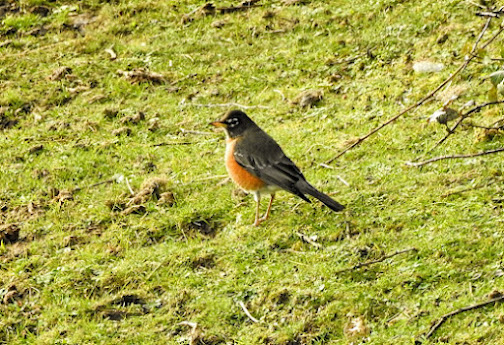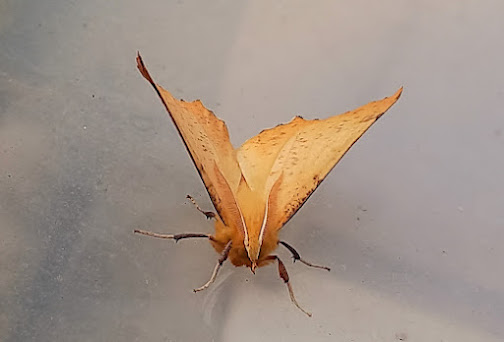Wednesday 21st December 2022.
As we are fast approaching the end of the year, I wanted to reflect on some of the birds and other wildlife that has made 2022 special. Yes, we did lose our precious dog Scruff last week, which has left a huge hole in our hearts, but on a positive side, 2022 did produce a very good bird and moth species total. I clocked up 226 bird species in the UK this year, one of the highest totals I have ever had and kicking off the early part of the year with a trip to Norfolk most certainly helped.
Moths too, were in good volume and I certainly got some crackers throughout the year. A final total of 168 species of ‘Macro’ moth and 127 species of ‘Micro’ moth. I even saw my first ever Brown Hairstreak butterfly perched on a Buddleia plant in a pub garden! I still cannot believe I saw it!!
Though I never saw any Bird ‘Lifers’ this year ( I do not ‘twitch’ much these days, though I should have gone for the long staying Baikal Teal in Somerset earlier this year, though). Nevertheless, Andy and myself got to see some cracking birds including Tundra Bean Goose, Cranes, Tree Sparrow, Red-breasted Goose, Leach’s Petrel, Squacco Heron, Buff-breasted and Pectoral Sandpiper, Bonaparte’s Gull, American Robin, Hume’s Warbler, Barred Warbler, both Red-backed and Great Grey Shrike, Chough, Shorelark and my first Hampshire Iberian Chiffchaff. Some great birds and some great memories. I would also like to thank the ‘Lazee Birders’ in telling us the sites in Hampshire to see Lesser Spotted Woodpecker, Stone-curlew and Hampshires first breeding Dippers for many a year.
On the Macro moth scene, arguably my best moth of the year was in no doubt the Striped Hawk-moth. This southern European species made a large landfall in the UK, which was mostly due to the heatwave where temperatures in the UK exceeded 100 degrees Fahrenheit. Long periods of southerlies brought in a lot of immigrant moths including some African species that were new for the UK. New ‘Macro’ moths for my life list this year included a Large Thorn and Plumed Fan-foot; the latter a very scarce migrant moth. Micro moths also featured heavily on my life list and a new App was introduced to the public with ‘Obsidentify’ making its debut. Using this App helped me to identify a lot of newcomers to my life list including up to 23 new species! However, one micro moth which I found at Portchester Crematorium, was my first ever Large Tabby (sounds more like a Cat than a moth!).
As mentioned before, the weather played its part again this year and it looks as though it proved to be the warmest year on record again and 2023 is expected to get even hotter due to Climate Change. Let's be honest, if you do not believe in Climate Change, like one certain ex-American President, just call it a day! How can we get -15 degrees one week and then +14 degrees the next in the UK, which was witnessed last week?
Back to this week. I have not done any birding since last Saturday as I have been too busy of late, though I do check out my garden when I can; topping up the bird feeders nearly 3 times a week now! The American Wigeon on Efford Lake, Pennington Marshes, was a no show over the past few days, but much nearer to home, Black Point (off Hayling Island) has produced a female Velvet Scoter, Long-tailed Duck and a Little Gull (welcome back Andy Johnson) and up to 3 Great Northern Divers off Eastney Point today and yesterday. The family flock of Russian White-fronted Goose, Black Brant and now 3 Short-eared Owls have remained faithful to Farlington Marshes and it or another Tree Sparrow had been found at Chilling Cliffs yesterday. A female Scaup was also seen flying with Mergansers yesterday near the Hayling Bridge; a species I have not seen this year.
Further afield, a species I have always wanted to see, an Isabelline Wheatear, has been found at Colyford Common Local Nature Reserve in Devon. A possible ‘twitch’ to round the year off, perhaps? On the Isle of Portland, a male Cirl Bunting has taken up residence at Reap Lane. I usually get my Cirl Buntings at East Prawle, but not this year, sadly.
Andy and myself will be doing the annual ‘Dawn to Dusk’ birding on New Years Day where Andy is determined to win the ‘Fly/Pye’ Cup for the first time in many a year (first one to 100 species for the year). We shall be studying what is around in both Hampshire and West Sussex nearer the time to see what species we should be going for.



.JPG)
.jpg)
.JPG)







No comments:
Post a Comment